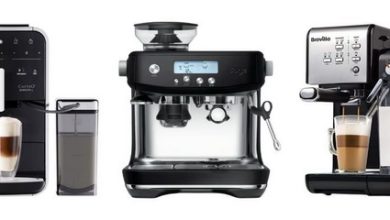How do I Make a Coffee Enema: A Complete Guide for Safe and Effective Detox
How do I make a coffee enema Coffee enemas have garnered attention as a holistic health practice believed to support detoxification and improve overall well-being. Advocates of coffee enemas claim they can enhance liver function, aid in eliminating toxins, and promote digestive health. However, it’s essential to approach this practice with caution and understanding.
How do I Make a Coffee Enema
Understanding how to properly prepare and administer a coffee enema is crucial due to the potential risks involved, including infection, electrolyte imbalances, and discomfort. This guide aims to provide clear, evidence-based information on the process, emphasizing safety measures and informed decision-making. By gaining insight into the procedure and its associated risks, individuals can make informed choices regarding their health and well-being.
Understanding Coffee Enemas
What is a coffee enema?

A coffee enema is a procedure that involves introducing a coffee solution into the colon via the rectum. The coffee solution is typically held in the colon for a short period before being expelled. Advocates of coffee enemas claim that this process helps to detoxify the body by stimulating the liver and increasing bile production, which is believed to assist in the elimination of toxins from the body.
Historical Context and Modern Usage
Coffee enemas have a long history of use, dating back to ancient times when various cultures used enemas for therapeutic purposes. In modern times, coffee enemas gained popularity as part of alternative medicine practices and detoxification protocols. They are often promoted in holistic health circles as a natural method to cleanse the body and support liver function.
Explanation of Detoxification Claims and Purported Benefits
Proponents of coffee enemas assert several potential benefits:
- Detoxification: By stimulating bile flow and increasing liver activity, coffee enemas are believed to aid in the removal of toxins from the bloodstream and tissues.
- Improved Digestion: It is suggested that coffee enemas can enhance digestion by promoting the elimination of waste and supporting overall gastrointestinal health.
- Increased Energy Levels: Some users report feeling more energetic and clear-headed after performing coffee enemas, attributing these effects to improved detoxification and liver function.
Benefits of Coffee Enemas
Detoxification Process: How Coffee Enemas are Believed to Work
Coffee enemas are purported to stimulate the liver to produce more bile, which aids in the removal of toxins from the body. The caffeine in the coffee is thought to stimulate bile production, and when administered rectally, it reaches the liver more quickly than if consumed orally. Proponents claim that this process helps the liver to eliminate waste and toxins more efficiently, promoting overall detoxification.
Potential Health Benefits Claimed by Proponents
Advocates of coffee enemas suggest several potential health benefits:
- Improved digestion: By enhancing bile flow, coffee enemas may improve digestion and alleviate constipation.
- Detoxification: Supporters claim that regular use of coffee enemas can assist the body in eliminating accumulated toxins, leading to increased energy levels and overall well-being.
- Pain relief: Some proponents believe that coffee enemas can reduce pain and inflammation, although scientific evidence supporting this claim is limited.
Critical View: What Medical Experts Say About These Claims
Despite the claims made by proponents of coffee enemas, medical experts and researchers often express skepticism due to the lack of robust scientific evidence supporting these purported benefits. While the idea of detoxification through enhanced bile production is theoretically sound, there is a notable absence of well-designed clinical studies demonstrating significant health improvements from coffee enemas. Furthermore, medical professionals warn of potential risks associated with the procedure, including infection, electrolyte imbalances, and bowel perforation.
Preparation for a Coffee Enema
Before you begin preparing and administering a coffee enema, it’s essential to gather the right materials and ensure a clean, hygienic environment. Here’s what you need to consider:
Choosing the Right Coffee
The type of coffee you use for a coffee enema can significantly impact its effectiveness and safety. Here are key considerations:
- Organic vs. Non-organic: Opt for organic coffee to minimize exposure to pesticides and chemicals, which could be absorbed into your body during the enema process.
- Caffeinated vs. Decaffeinated: While traditionally caffeinated coffee is used for enemas due to its purported stimulating effects on bile production and detoxification, some prefer decaffeinated coffee to avoid potential side effects of caffeine, such as jitteriness.
Ensure the coffee you choose is fresh and of high quality. Avoid flavored or processed coffees, as additives may interfere with the enema’s intended benefits.
Equipment Needed
To perform a coffee enema safely and effectively, you’ll need the following equipment:
- Enema Kit Components:
- Enema Bag or Bucket: This serves as the container for the coffee solution. Choose a kit that allows for easy measurement and control of the solution flow.
- Tubing: Connects the enema bag or bucket to the nozzle. Silicone tubing is often preferred for its flexibility and ease of cleaning.
- Nozzle: The nozzle is inserted into the rectum to deliver the coffee solution. Look for a smooth, rounded nozzle to ensure comfortable insertion.
Ensure all components of the enema kit are clean and sterile before use. Follow manufacturer instructions for assembly and sterilization procedures, if necessary.
Ensuring Cleanliness and Hygiene
Maintaining strict cleanliness and hygiene is crucial to prevent infection and ensure the effectiveness of the coffee enema. Here are important steps:
- Wash Hands Thoroughly: Before handling any equipment or preparing the coffee solution, wash your hands with soap and water.
- Sterilize Equipment: If reusable, sterilize the enema bag or bucket, tubing, and nozzle according to manufacturer guidelines. For disposable components, ensure they are unopened and sterile.
- Prepare in a Clean Environment: Choose a clean, private space for preparing and administering the enema. Use a clean surface to assemble the enema kit and prepare the coffee solution.
Step-by-Step Guide to Making a Coffee Enema
Recipe for Preparing the Coffee Solution
To prepare a coffee enema solution, you’ll need to follow these steps:
- Choose Your Coffee: Use organic, ideally non-decaffeinated coffee beans. The recommended type is light to medium roast, finely ground. Avoid flavored or instant coffee.
- Water-to-Coffee Ratio: Measure out 1 liter (approximately 4 cups) of filtered water. Add 2 tablespoons of coffee grounds to the water.
- Brewing Method: Bring the water and coffee grounds to a boil in a saucepan. Once boiling, reduce heat and let it simmer for about 15 minutes, stirring occasionally.
- Cooling and Straining: After simmering, remove the saucepan from heat and allow the coffee solution to cool to a comfortable temperature. Strain the coffee through a fine-mesh strainer or cheesecloth to remove any remaining grounds. Ensure the liquid is lukewarm to avoid discomfort during administration.
Assembling and Preparing the Enema Kit
- Gather Your Equipment: You’ll need an enema kit, which typically includes a bag or bucket, tubing, and a nozzle. Ensure all components are clean and sterile before use.
- Assemble the Kit: Attach the tubing to the bag or bucket according to the manufacturer’s instructions. Make sure all connections are secure to prevent leaks.
- Prepare the Nozzle: Lubricate the enema nozzle with a water-based lubricant to ease insertion. Place the nozzle aside, ready for use.
- Fill the Enema Kit: Pour the strained coffee solution into the enema bag or bucket. Hang the bag or position the bucket securely above the area where you’ll administer the enema.
Administering a Coffee Enema Safely
Setting up a Comfortable Space: Positioning and Preparation
Before administering a coffee enema, it’s essential to create a comfortable environment that allows for relaxation and ease of access. Here’s how to prepare:
- Choose a Quiet and Private Location: Select a private area where you can comfortably lie down without interruptions.
- Gather Necessary Supplies: Have all your supplies within reach, including the enema kit, towels for cleanup, and a timer if needed.
- Positioning for Comfort:
- Lie on your right side with your knees drawn towards your chest, or kneel on all fours. Find a position that feels comfortable and allows easy access to insert the enema nozzle.
Lubrication and Insertion of the Enema Nozzle
Proper lubrication and insertion of the enema nozzle ensure comfort and ease during the procedure:
- Use a Water-Soluble Lubricant: Apply a generous amount of water-soluble lubricant to the tip of the enema nozzle to facilitate smooth insertion.
- Insert the Nozzle Gently: Slowly and gently insert the lubricated nozzle into the rectum, aiming towards the lower colon. Stop if you feel resistance and adjust the angle if needed for easier insertion.
- Secure the Nozzle: Once inserted, secure the nozzle in place to prevent leakage during the coffee enema procedure.
Administering the Coffee Solution at a Controlled Rate
Administering the coffee solution slowly and at a controlled rate ensures optimal absorption and comfort:
- Elevate the Enema Bag or Bucket: Position the enema bag or bucket around 18-24 inches above your body to create a gentle flow of the coffee solution.
- Open the Clamp or Valve Slowly: Open the clamp or valve on the enema tubing slowly to allow the coffee solution to flow into your colon gradually.
- Monitor Comfort Levels: Pay attention to your body’s response. If you experience discomfort or cramping, pause the flow momentarily and resume at a slower rate.
- Hold the Solution: Aim to retain the coffee solution in your colon for around 10-15 minutes to maximize its purported benefits. Use a timer to track the duration if needed.
Post-Procedure Care and Tips
After administering a coffee enema, proper post-procedure care is essential to maximize potential benefits and minimize discomfort or risks.
Holding the Coffee Enema: Recommended Duration and Techniques

Once the coffee solution is administered, it’s recommended to hold the enema for about 10 to 15 minutes. This duration allows the caffeine and other compounds in the coffee to be absorbed through the colon wall into the bloodstream, purportedly aiding in detoxification.
To effectively hold the enema, find a comfortable position such as lying on your side or back with knees bent. Relaxation techniques, deep breathing, or focusing on a calming activity can help manage any discomfort or urge to expel the solution prematurely.
Discomfort and Potential Side Effects: What to Expect
Discomfort during or after a coffee enema can vary among individuals. Common side effects may include:
- Cramping: Mild to moderate cramping in the abdomen is normal and usually subsides shortly after the enema is expelled.
- Nausea or Dizziness: Some people may experience temporary nausea or dizziness, particularly if they are sensitive to caffeine or have not hydrated adequately.
- Electrolyte Imbalance: Coffee enemas can potentially disrupt electrolyte balance, so it’s important to replenish fluids and electrolytes afterward.
If discomfort persists or becomes severe, discontinue the use of coffee enemas and consult with a healthcare professional.
Hydration and Replenishment: Importance of Electrolyte Balance
After completing a coffee enema, focus on rehydrating your body. Drink plenty of water to help flush out toxins and maintain hydration. Electrolytes, such as sodium, potassium, and magnesium, are crucial for nerve and muscle function and may be depleted during the detoxification process.
Consider replenishing electrolytes with natural sources like coconut water or electrolyte-enhanced drinks. Avoid sugary beverages and excessive caffeine consumption immediately following the procedure, as they can interfere with hydration efforts.
Potential Risks and Considerations
While coffee enemas are promoted as a natural detox method, they are not suitable for everyone. It’s crucial to consider the following risks and contraindications before attempting a coffee enema:
Medical Conditions and Contraindications
- Pregnancy: Pregnant women should avoid coffee enemas due to potential risks to the fetus and the lack of sufficient safety data.
- Heart Conditions: Individuals with heart problems or hypertension should avoid coffee enemas, as caffeine absorption through the colon can elevate heart rate and blood pressure.
- Gastrointestinal Issues: People with inflammatory bowel disease (IBD), Crohn’s disease, ulcerative colitis, or severe hemorrhoids should avoid coffee enemas, as they can exacerbate these conditions or cause rectal irritation.
- Recent Abdominal Surgery: Those who have undergone recent abdominal surgery should avoid coffee enemas until fully healed, as they may interfere with the healing process.
- Electrolyte Imbalance: Coffee enemas can lead to electrolyte imbalances, especially if performed too frequently or improperly. Individuals with electrolyte abnormalities should avoid them.
Consulting with a Healthcare Professional Before Attempting
Before trying a coffee enema, it’s essential to consult with a healthcare professional, especially if you have any underlying health conditions or concerns. A medical provider can offer personalized advice based on your health history and current medications. They can also help assess whether a coffee enema is safe and appropriate for you, considering your individual health circumstances.
Taking these precautions seriously can help mitigate potential risks associated with coffee enemas and ensure your health and safety are prioritized. Always prioritize informed decision-making and consult with a healthcare provider before attempting any new health practice or treatment.
Frequently Asked Questions About Coffee Enemas
What is the best enema coffee to buy?
Using regular ground coffee won’t provide the detoxification benefits you seek. Enema therapy coffee needs to be specifically designed:
- It should be “clean,” as it enters the liver directly.
- Look for high cafestol content to open bile ducts.
- Opt for “air roast” processed coffee for cleanliness.
- Fine ground coffee retains potency longer.
What is the best kit to use?
For enema equipment, stainless steel buckets are recommended:
- They are non-toxic and easy to sterilize.
- Plastic bags may leech toxins and are often not BPA-free.
- Medical-grade silicone tubing is safest for enemas.
How much coffee should I use?
Prepare your enema with 3 tablespoons of organic enema coffee and 4 cups of filtered water.
Can I use tap water?
Avoid tap water due to contaminants. A Berkey Water Purification System is recommended.
What side do I lay on?
Lay on your right side while administering the coffee enema.
How high should I hang the bucket?
Hang no higher than 18 inches for best results and to reduce air pockets.
What’s the best kind of tubing to buy?
Choose silicone medical-grade tubing:
- It withstands high heat for sterilization.
- Non-toxic, BPA-free, latex-free, and phthalate-free.
- Translucent for easy cleaning checks and durable.
Are coffee enemas safe?
While they are part of therapies like Gerson Therapy, consult a physician before use, especially if you’ve had chemotherapy.
Can I just drink coffee?
Drinking coffee affects intestines differently than using it in an enema, which bypasses the intestines’ acidity.
Can I use regular coffee for an enema? Using regular coffee is not recommended for a coffee enema. It’s crucial to use organic, non-decaffeinated coffee specifically intended for enemas. This ensures purity and minimizes the risk of introducing harmful substances into the body.
Is coffee enema good for you? Proponents claim that coffee enemas can aid in detoxification by stimulating bile flow in the liver and improving digestion. However, medical experts stress the lack of scientific evidence supporting these benefits. It’s essential to approach coffee enemas cautiously and consider individual health conditions before trying them.
What is coffee enema made of? A coffee enema is made from organic, non-decaffeinated coffee and purified water. The coffee is brewed and then cooled to a comfortable temperature before being administered rectally.
Coffee enema before and after? Before a coffee enema, it’s essential to prepare the coffee solution and enema kit following proper hygiene practices. After the procedure, individuals may experience varying sensations, including improved energy levels or mild discomfort. Monitoring for any adverse reactions is crucial.
Best coffee for enema? The best coffee for a coffee enema is organic, non-decaffeinated coffee. It should be free from additives or contaminants to ensure safety and effectiveness during the procedure.
Coffee Enema Instructions?
Detailed coffee enema instructions:
1. Preparation
- Choose the Right Coffee: Use organic, non-flavored, and ideally non-decaffeinated coffee beans. Quality matters for effective detoxification.
- Equipment: Gather an enema kit, including an enema bag or bucket, tubing, and a nozzle. Ensure all components are clean and sterilized before use.
- Water: Use filtered or distilled water for preparing the coffee solution to avoid introducing impurities into the colon.
2. Making the Coffee Solution
- Brewing: Boil 1 liter (approximately 4 cups) of water and add 2 tablespoons of ground coffee. Simmer for 15 minutes, then remove from heat and let it cool to room temperature.
- Straining: Once cooled, strain the coffee solution through a fine mesh strainer or cheesecloth to remove any coffee grounds. The resulting liquid should be at body temperature or slightly cooler.
3. Setting Up for the Enema
- Prepare the Space: Find a comfortable, private area where you can lie down and relax during the procedure.
- Positioning: Position the enema bag or bucket around 2 feet above the ground, ensuring the tubing is securely attached.
4. Administering the Enema
- Lubrication: Apply a small amount of lubricant (such as petroleum jelly or coconut oil) to the tip of the nozzle for easier insertion.
- Insertion: Lie on your left side with knees drawn towards your chest. Slowly and gently insert the lubricated nozzle into the rectum, aiming towards the sigmoid colon.
- Administering the Solution: Open the clamp on the tubing slowly to allow the coffee solution to flow into the colon. If discomfort occurs, close the clamp momentarily and resume once comfortable.
- Retention: Hold the coffee solution in for 10-15 minutes if possible to maximize its effects. You may experience cramping or the urge to expel the solution; try to resist until the recommended time has passed.
5. Aftercare
- Emptying: After the retention period, empty the enema bag or bucket and clean all equipment thoroughly with warm, soapy water.
- Hydration: Drink plenty of water post-procedure to support hydration and help flush out toxins.
6. Safety Considerations
- Consultation: Always consult with a healthcare professional before attempting a coffee enema, especially if you have underlying health conditions or concerns.
- Monitoring: Pay attention to your body’s reactions during and after the procedure. Discontinue immediately if you experience severe discomfort or adverse effects.
Following these instructions carefully and mindfully can help ensure a safe and effective coffee enema experience.
Coffee enema kit? A coffee enema kit typically includes an enema bag or bucket, tubing, a nozzle, and possibly a clamp for controlling flow. It’s essential to choose a high-quality, sterilized kit to minimize the risk of contamination.
How long does it take for a coffee enema to work? The effects of a coffee enema can vary among individuals. Some may experience immediate relief or increased energy, while others may notice benefits over time with regular use. It’s essential to follow recommended guidelines and listen to your body’s responses.
Benefits of coffee enema? Advocates claim benefits such as improved liver function, detoxification, and relief from constipation. However, scientific evidence supporting these claims is limited, and caution is advised when considering coffee enemas.
Coffee enema detox symptoms?

Detox symptoms associated with coffee enemas may include temporary cramping, discomfort, or changes in bowel movements. Hydration and electrolyte balance are essential to manage these symptoms effectively.
Coffee enema for liver? Proponents suggest that coffee enemas support liver health by promoting bile production and detoxification processes. However, medical experts emphasize the need for more research to validate these claims and caution against relying solely on coffee enemas for liver health.
Conclusion
learning how to make a coffee enema involves careful preparation and consideration of potential risks and benefits. Here’s a recap of the essential steps:
- Preparation: Choose organic, non-caffeinated coffee and ensure cleanliness of equipment.
- Procedure: Follow a precise brewing and cooling process, then administer the enema at a controlled rate.
- Safety: Positioning, hygiene, and monitoring for any adverse reactions are crucial during and after the procedure.
While proponents of coffee enemas advocate for their detoxification benefits, it’s essential to approach them with caution. Consulting with a healthcare professional before attempting a coffee enema is advisable, especially for individuals with underlying health conditions.
In holistic health practices, including coffee enemas, prioritizing safety, thorough research, and understanding individual health needs are paramount. By making informed decisions and respecting personal boundaries, individuals can explore alternative health methods responsibly.
Embrace holistic health practices with mindfulness and respect for your body’s unique requirements, ensuring any new wellness approach aligns with your overall well-being and health goals.
Read More: Can You Use Brown Sugar for Coffee? Discover the Benefits and Best Recipes In 2024







